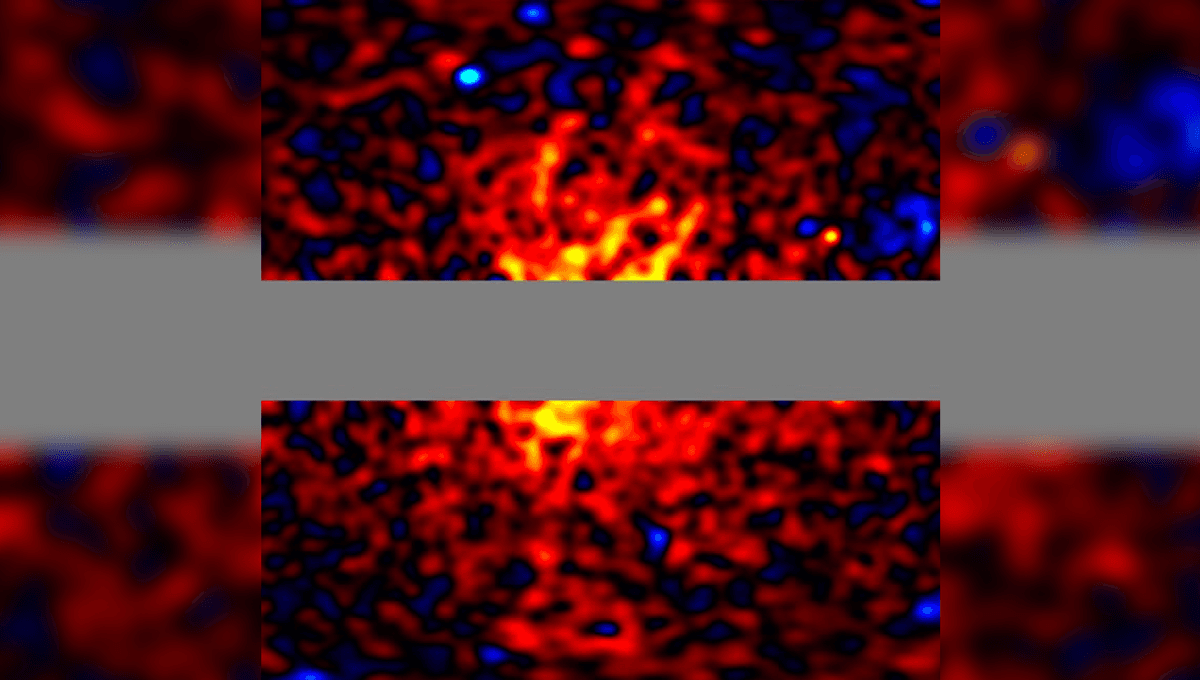Have We Finally "Seen" Dark Matter? Galactic Gamma-Ray Halo May Be First Direct Evidence Of Universe’s Invisible "Glue"

Did Scientists Just "See" Dark Matter For The First Time?
A halo of gamma-rays detected by the Fermi Space Telescope matches what would be expected if particles with masses around 500 times that of the proton are being annihilated near the Milky Way’s galactic center. A new study argues there is no known source for these gamma-rays, and their distribution is different from what we’d expect if their origins are in galactic light, not dark material.
The rest of this article is behind a paywall. Please sign in or subscribe to access the full content. Among the many theoretical objects that have been proposed to explain dark matter, WIMPs (weakly interacting massive particles) have long been a favorite. These would be subatomic particles that produce and are affected by gravitational fields, but not electromagnetism or nuclear forces. Because they interact weakly, detection is difficult, but collisions between WIMPs are expected to annihilate both under certain conditions, releasing a shower of other particles and electromagnetic energy. Although some galaxies appear to have an excess of dark matter relative to their stars, in general, the distribution of dark matter roughly matches the material we can see. Consequently, the closest concentration of dark matter is at the center of the galaxy, so physicists have looked for unexplained radiation there that could represent annihilating WIMPs. Professor Tomonori Totani of the University of Tokyo thinks they have found it. "We detected gamma rays with a photon energy of 20 gigaelectronvolts (or 20 billion electronvolts, an extremely large amount of energy) extending in a halolike structure toward the center of the Milky Way galaxy. The gamma-ray emission component closely matches the shape expected from the dark matter halo," Totani said in a statement. A wide array of well-known phenomena also produce gamma-rays, but Totani claims there is an excess of 20 GeV photons beyond what these sources can account for. "If this is correct, to the extent of my knowledge, it would mark the first time humanity has 'seen' dark matter. And it turns out that dark matter is a new particle not included in the current standard model of particle physics. This signifies a major development in astronomy and physics," Totani said. Totani is not claiming a sharp spike at 20 GeV, instead proposing that this is the peak of a wide range of energies for gamma-rays beyond what other sources can account for. A previous excess of lower-energy gamma rays from the galactic center was proposed to be a dark matter signal, but subsequent evidence indicated it must have a stellar source, probably pulsars. Totani argues that the different distribution of the 20 GeV excess from the one identified previously means they must have different sources, increasing the likelihood that dark matter is responsible. In 2016, a gamma-ray detection, also made by the Fermi telescope, was proposed to be coming from dark matter annihilations. However, while the source in that case is large, and not emitting at other wavelengths, it is nothing like the galactic center in size. Although public perceptions of science are stuck in the era of the lone genius, today most science is done in large teams. Totani is something of an exception. Two years ago, he and just one other author attributed repeating fast radio bursts to starquakes on magnetars, and he has published his latest claim alone. Evidence for the presence of mass exceeding what we can see in stars and other ordinary matter stretches back almost a century. In such an environment, a claim to have solved the problem made by a single author needs to be treated with caution. Further research will look for similar excess gamma rays in places where dark matter is abundant, as well as seek the particle’s signature in collider experiments. Even if Totani’s 500-proton mass WIMPs turn out to be real, they may only account for a portion of dark matter, in which case the search would go on. The study is published in the Journal of Cosmology and Astroparticle Physics.


